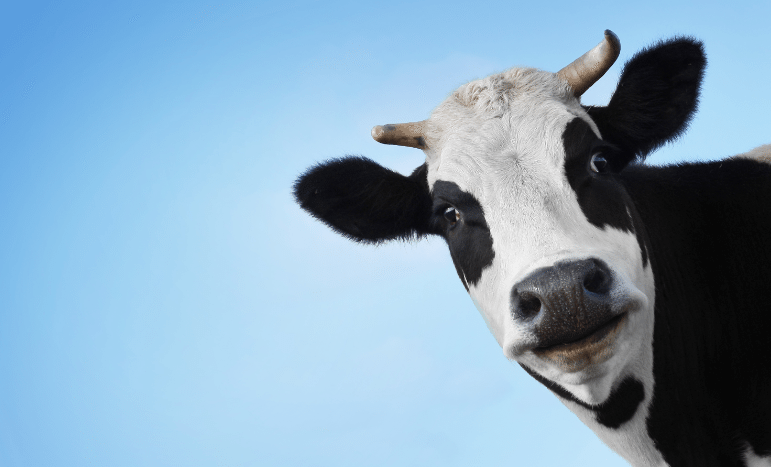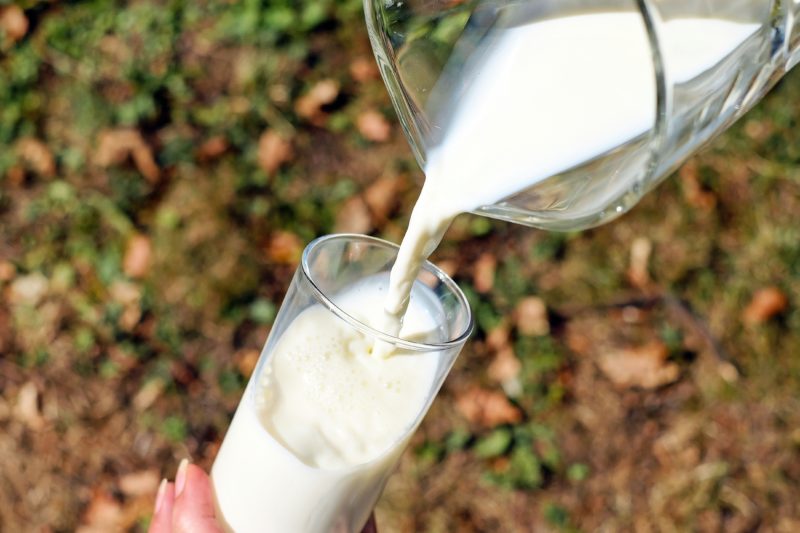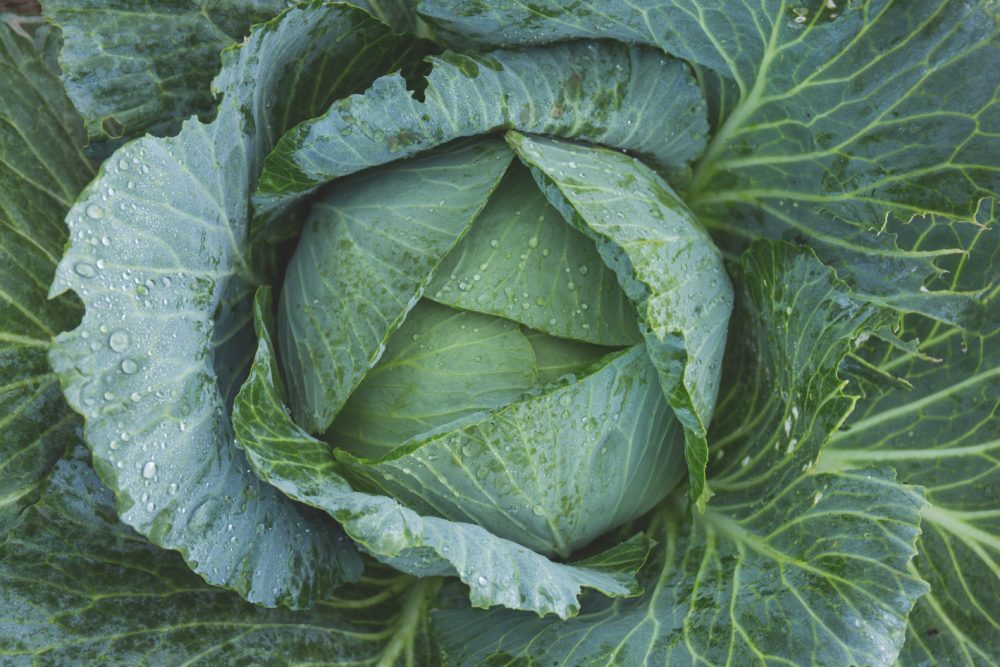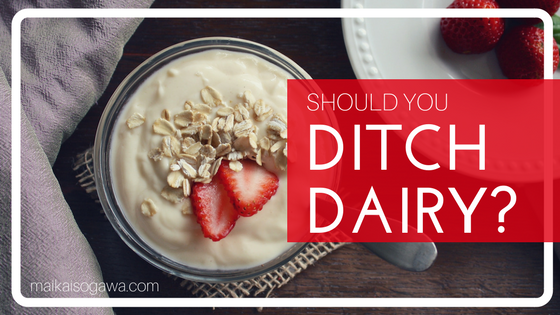Can you make yourself lactose intolerant? Why do some forms of dairy disrupt you but others don’t? Can dairy cause skin problems and hormone issues? Is dairy good for you? What about calcium, and protein?
All of these questions, and dozens more, have been on my mind for the past few years as I’ve ventured along my own health and nutrition journey. With the ‘dairy-free’ movement gaining momentum, it seems as though more and more people are ditching dairy. Specifically, cow’s milk. It’s becoming easier to do so as well, with the shelves filling with interesting alternatives and reputable replacements.
To understand the prevalence of milk and dairy products in our current society, it’s helpful to know a bit of the background and history. Also, comparing American dairy culture to other countries may shed some light on the questions as well.
[Disclaimer – the validity and accuracy of all ‘facts’ and cited sources are debatable. I’ve gathered information based on current accepted and presented findings and research, filtering it through opinion, thought, and anecdotal evidence. The general understanding of human history is likely flawed – a discussion for another day. As always, form your own conclusions.]
Descent Of Dairy
Some brave human, a long time ago, was curious enough to approach an animal, collect its milk, and transform it into dairy products. What a guy. Isotope analysis on excavated ceramic strainers date dairy roots to as early as seventh millennium BC.
If animal milk and dairy products have been around for this long, can all of those nasty health claims really be true? Well, It’s a bit more complicated than that. (First, It’s likely that the milk and dairy centuries ago was different from what’s offered in plastic bottles on the grocery store shelves today.)
Although milk can be extracted from a number of different animals, goats were most likely among the first. In comparison to cows, goats produce more milk, are smaller in size, the milk is easier to digest, and is less likely to cause lactose intolerance because of its lower count of lactose molecules. Despite this, people hear ‘milk’ and assume cow’s milk. In reality, 65% of the world (that’s the majority) drink goat’s milk over cow’s milk. Ah, the power of advertising.

Since the consumption of dairy began all those years ago, there’s been dramatic advancements in technology and understanding of health. Pasteurization was invented, among other chemicals and processes that changed the products – making them more safe to drink. Now we can pick up tasty organic chocolate milk made from genetically engineered, purebred cacao cows at most commercial grocery stores!
What’s In The Milk We Drink Today?
Besides certain vitamins, minerals, proteins and other substances normally found in a ‘regular’ glass of milk these days, there’s a few things that may not be so obvious. If you’re a milk-lover, maybe skip this part, because ignorance is bliss right?
The contents of the milk will depend on the company, processing, and the animals themselves. (Not all milk is created equal) To prepare you for the worst, here’s a short list of some of the horrible things that may be in your milk: Antibiotics, Synthetic growth hormone, Steroids, Pesticides from the food the cows ingest, pus cells, bovine, feces, and more!

It’s not on the label, and since it’s injected in the cow that makes the milk, not the milk itself, companies don’t have to mention it. Yay loopholes!
Health Claims
Cow’s milk = ‘good source of calcium’
An average glass of cow’s milk has 300 milligrams of calcium. The US ‘recommended’ amount ranges from 1000-1200 milligrams of calcium per day (depending on the source). However the World Health Organization promotes around 500 mg, and each country has a different recommendation beyond that. We’re all different shapes and sizes, so the amount of calcium necessary is going to vary from person to person.
But do we really need all that calcium? Certain studies suggest that high calcium intake doesn’t lower a person’s risk of osteoporosis. In other countries such as Japan, the daily calcium intake is as low as 300 mg a day (that’s a third of the American recommended intake) yet incidents of bone fractures are low. If you’re concerned about bone health, you’ll also want to pay attention to vitamin D, K, A, and protein. However, calcium is necessary for a variety of bodily functions like maintaining bones, nerve impulse function, and proper heart rhythm, so you can’t ditch it completely.
Luckily, dairy products aren’t the only high source of calcium. So if you choose to forgo that glass of milk, reach for plants like collard greens, kale, and broccoli, or seafood such as sardines, salmon and shrimp. Fortified milk alternatives boast high amounts of calcium, but it’s not naturally occurring, and the body’s ability to actually utilize and absorb these added forms of nutrients is unclear. I recommend sticking to whole food sources.

Cow’s milk = ‘good source of protein’
A glass of cow’s milk has a decent serving of protein compared to it’s other milk counterparts. If dairy works for you, it’s a great option. But protein is found in almost every whole food. So when it comes to finding a source of protein that works for you, you’re in luck. From seafood, poultry, and meats, to vegetables and legumes… your options are plenty.
‘It’s better to drink low-fat versions’
There seems to be a fear of fat flying around. Eating fat doesn’t make you fat, and thankfully, that concept is becoming slowly re-accepted once again. There are various theories about why we’ve labeled fat as the enemy; anything from big business conspiracies to misguidance by leaders. Instead of blaming, it’s more productive to find a solution, don’t you think? The first step is knowing fat is not the villain. (Again, a conversation for another day)
Dairy-specific, one finger points towards the high saturated fat content in whole milk, which can raise the level of cholesterol in your blood, possibly increasing heart disease and stroke. But the research connecting cholesterol levels and increased risk is muddled. New thinking argues that full-fat is better.

Your Skin And Dairy
You may have heard it before, “I gave up dairy and now have the best skin of my life!” The culprit? Hormones. Our bodies are delicate exploding volcanoes of biological processes and hormonal fluctuations. This balance has a heavy connection with our complexion, causing breakouts and other skin problems when it’s out of whack. I have enough trouble regulating my own hormones, I see no need to throw extra injected-in-cow hormone into that mix.
On my ‘no sugar’ challenge, I cut out dairy for over a month. One day, I had a tiny glass of yogurt, and the next morning I was greeted by two huge red spots on my face. It’s 100% possible it had nothing to do with the dairy, but just to be safe, #dairyfree.
If you’re struggling with skin issues, try cutting out dairy for awhile.
Lactose Intolerance
Two of my friends are dating each other. One was completely fine with dairy. The other was dairy-free. Living together, the couple got used to not having any dairy. A year later, the one that was fine with dairy, had a glass of regular milk, and spent the rest of the day making multiple trips to the bathroom and moaning of stomach cramps like a teenage girl with PMS.
Had he become lactose intolerant?
Lactose intolerance means that you can’t metabolize lactose properly. (Different from a milk allergy) It’s usually because they don’t make enough lactase, an enzyme produced by the digestive system. Lactose is found in milk, and other dairy products. Symptoms may include bloating, gas, and diarrhea. Some reports say that around 75% of the world’s population is lactose intolerant, with higher percentages among certain races (asians – hello).
I avoid dairy, simply because of the stomach discomfort it causes me. But hey, I love ice cream, and when I eat it I seem to be fine. So either my mental desire and adoration of the sweet treat is stronger than my biological reaction, or i’m mistaken about my intolerance and choose to be a whiny health-nut anyways.

Since lactase is something that you produce, it’s possible that your digestive system will down-regulate the creation if you stop ingesting lactose. Why would your body make an enzyme if it’s not being put to use? Lactose intolerance is a swirl of genetics, background, and lifestyle. So it’s up to personal trial-and-error to figure out what’s going to be best for you.
If you decide to ditch dairy altogether (like I’ve decided to do for a while), the dairy-free product market is growing fast. There’s a lot of fun products!
Alternatives To Dairy
It’s a serious struggle to find alternatives for milk in Japan, especially at coffee shops. Living here now for over a year, asking a cafe if they offer dairy-free milk is like slamming your head into a wall and being surprised when you get a headache. Some grocery stores sell soy and almond milk though, yay.
If you’re in a country that drives on the wrong side of the road, you may have more dairy-free options. Almond, soy (be wary), cashew, rice, hemp, coconut, walnut, pea, etc. etc. milk products line the shelves. Who knew that peas lactated? Anyways, it’s never been easier to ditch the dairy. What a time to be alive.
…
If you found this interesting or informational, please share it using the social links. If you have questions or find mistakes in the writing, comment below.
…
Do you have trouble with dairy? What are your favorite dairy alternative products? Let me know in the comments 🙂
